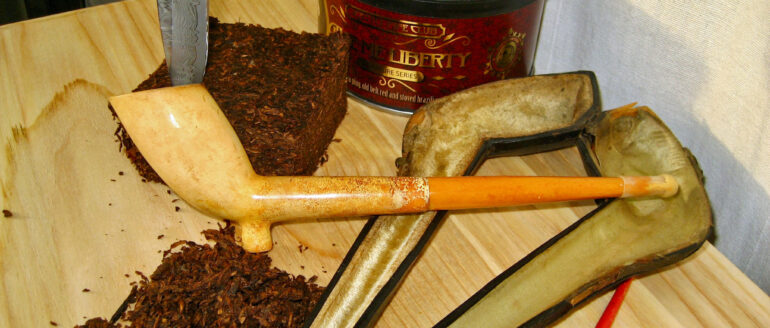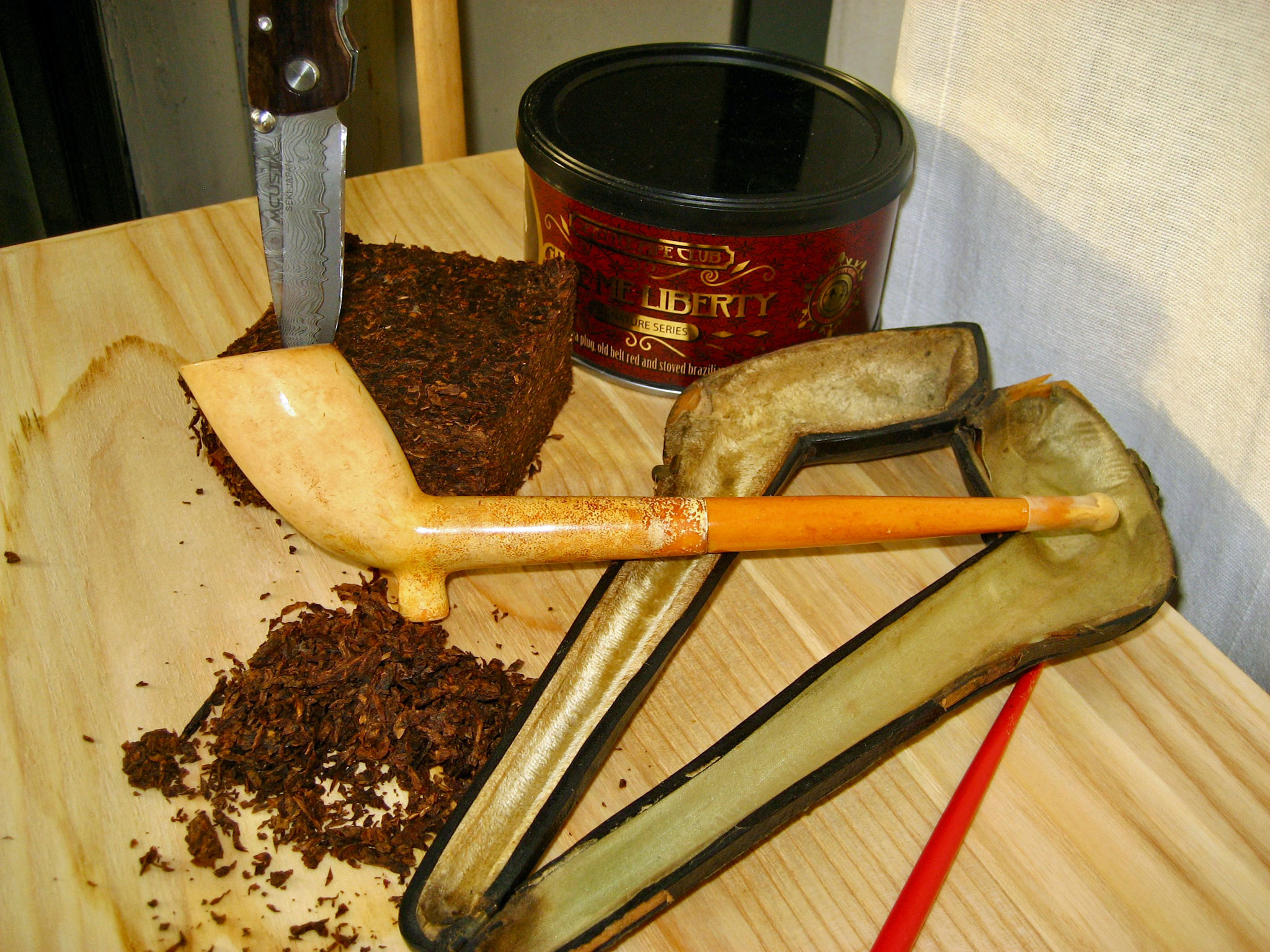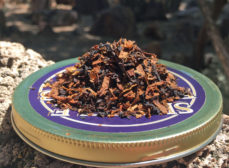
A notion that’s been on my mind of late is legacy; what remains from one’s hour of strutting and fretting upon the stage? I suppose it’s a not-uncommon preoccupation as one gets older and more mature—neither of which I’ll admit to readily, by the way. So it’s fitting that this month’s review is an appraisal of Give Me Liberty, the latest entry in the Signature Series from the Seattle Pipe Club blends produced by Sutliff, and the legacy of departed brother of the briar Joe Lankford, whose passing in September lessened the pipe world. Though I did not know Joe personally, I came to know of him through his blends for the Seattle club, as did many of us in the community. Joe created blends with such a sterling reputation that many of them, like Mississippi River and Plum Pudding, are already assured places in the pantheon of all-time great smokes. The man had many talents, and we are fortunate to have benefited from his passion for pipe tobacco.
Virginia tobacco is the queen of leaf, to be certain; the backbone around which the lion’s share of blends are built. Give Me Liberty as well as its sister plug, Hogshead, (released in May) is an homage to this, as well as recognition that the cultivation of tobacco played such a central role in the establishment of America as a nation—tobacco was so important a crop that it functioned as a primary currency in the colonies for its first couple of centuries. Having had the pleasure of reviewing a few of the SPC blends over the years, I’ve personally found them to be remarkable for their individuality. Liberty is no exception to this: a hefty and hearty four-ounce brick of Old Belt Red Virginia from North Carolina tempered with stoved Brazilian leaf is packaged in the cardboard tin, which naturally features a stylized version of the Currier & Ives lithograph of Patrick Henry uttering his famous entreaty.
There’s something special about a plug—the stoutness of it, the craftsmanship of it. For me it calls to mind woodworking or chefing; manipulating something with your hands, forging a thing into shape, has a very visceral appeal. Evidencing a shortish time in the press along with a good amount of moisture, Liberty when sliced easily crumbles into a tumble of evenly-cut leaf of a mahogany brindle, making for easy preparation and packing. The tin aroma when fresh is quite tart, high on the citrusy scale with that ketchupy tang of well-aged VA; with some time acclimating to oxygen it tempers down to a stewed cherry richness, with hints of cocoa, string beans, fresh-cut hay, and fallen autumn leaves. Noticeably absent are very woody overtones or much in the way of the oily leather aromas that one often finds with pure Virginia blends. This leads me to believe that a very particular care was taken in selection of leaf for the blend, and builds the anticipation of lighting it up.
Smoking a well-dried first bowl of Liberty at first is deceptively subtle and mild. There are initial tart notes on the tongue, and a bit of the softened woody tones that seemed absent from the tin bouquet—light wood; think willow or beech, as opposed to more commonplace tannic oak or bitter walnut. True to labeling, and despite the tingling on the tongue, there really is no bite in the smoke at all, down through to the heel of repeated bowls. Liberty starts to develop some complexity mid-bowl; as I find I’ve tended toward over-drying it in my preparation, a light but steady cadence with some breath smoking to gently add some hydration back into the bowl opens the bloom of flavors. This blend is all about the subtleties—a diaphanous mouthfeel, with tastes of woody char, fresh white bread, and mild-mannered sweet and herbaceous notes in the range of soft grilled citrus and burnt lemongrass, as well as a faint umami of wild game, predominate. The bowl requires a bit of tending as well, with several relights and close attention from the tamper and pick—not at all a detractor from the experience, though, as it demands that the smoker slow down, dedicate the time to focusing on the task at hand, and remain contemplative to get the full feel of it. My main testing implement for this blend was an early 19th century cutty in meerschaum and amber with a rather capacious bowl. I found it best to pack it only half-full, allowing plenty of air and room for cherry tending, and the pipe itself demanded I pay attention as it’s decidedly not a clench-and-forget piece.
This blend is not about trumpets blaring, neon lights flashing, or explosions of flavor in your mouth—it’s about settling in for some quality rumination and reverie. While the flavors certainly build over the course of a bowl, they never shout, never overplay their hand. Heading toward the heel, each performance ends with a perfect denouement redolent with the taste of burnt ends and much more of the woody, vegetal, and tarry notes so concealed from the onset. Overall a mild-medium flavor and aroma profile, as well as nicotine content; the sidestream smoke is equally mild and quickly dissipates. To note, drink accompaniments were tricky to pair with this, as overly sweet or sour drinks really tend to drown out the flavors of the smoke; I recommend a very light tea or simply a sparkling water to be best.
Another recommendation for accompaniment is a reading of the book of Ecclesiastes. While personally not a religious man, I accept great wisdoms wherever they may be written. Give Me Liberty is an earthy smoke that really calls out for measured reflection; and meditating on the passing of a season, and the passing of a friend to us all, is worthy pursuit indeed. The heart of pipe smoking is that it is an act of remembrance, through its self-contained rituals and appurtenances. Along with everything else he will be remembered for, Joe Lankford should be remembered foremost as a man with a gift that he shared, and I thank him for this legacy.



















